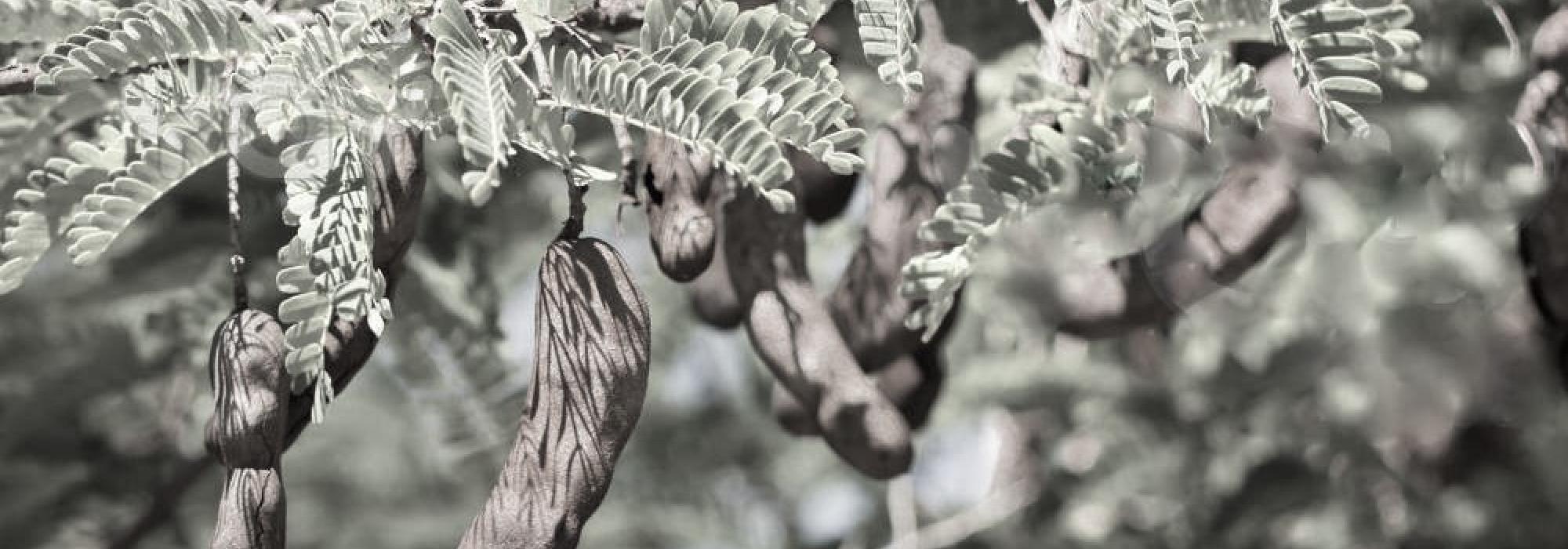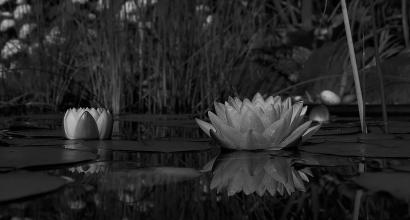The Hauteur
Such goliathon pastimes of my great grandfather were rather popular. For a subject of the Queen of Scantiness that I was, I sensed pride in every pompous fable that surrounded my great grandfather. At least he got to eat what he wanted.
From the aforementioned conversations gleaming with haughtiness, it is quite evident that hauteur was an obvious underlying factor in his administration.
Nevertheless, he was famed as a just and a competent person. As a matter of fact, it was he, who got our ancestral house at Mulabagal erected. The food charity carried out in the house had earned quite a reputation. The charity had extended to all the other Varṇas, apart from the usual Brāhmaṇa class. 'The House of Annadāna' (Food Charity) it came to be called. Till the time I lost that ancestral house of mine, it was honoured as 'Shekdar Gundappagārillu' (Shekdar Gundappa’s House).
Shekdar Gundappa had four sons and two daughters. The fourth and the last among the sons, named Veṅkaṭaramaṇayya, passed away during his childhood. The village folk talked of him as being handsome and intelligent. Bearing the affection for the same, my grandfather named my father too as Veṅkaṭaramaṇayya - a family lore that was prevalent in our circles.
One among Gundappa's daughter was married off to a certain Sampaṅgirāmayya, hailing from Mālur. She expired a while later, however. I know nothing of Gundappa's other daughter – neither her name nor any other details. And thus, three sons remained –
- Śeṣagirayya
- Rāmaṇṇa
- Śīnaṇṇa (Śīnappa)
Even before I step further into this narration, there’s one more must-tell about Gundappa. His wife, Kāmākṣamma too expired within a month or two post the demise of her last son, Venkaṭarmaṇayya. The reason for her death, as identified by the random people who've known her, is supposed to have been the the loss of her last son.
All the three daughters-in-law of Kāmākṣamma died after an year or two following her death. The second son, whose name was Rāmaṇṇa had a wife named Lakṣmīdevamma. She was the daughter of Subbayya of Beṭṭahalasūru. She died after an year or two following her childbirth and the child died too.
Rāmaṇṇa's Fury
Gundappa couldn't withstand the grief of his sons turning widowers and he sometimes pestered them to remarry. Rāmaṇṇa couldn't take his father's nagging, which eventually made him angry.
Once when Gundappa underwent barbering and wanted to take a bath following it, he called in Rāmaṇṇa to the bathroom, to pour a mug or two of water on him. Rāmaṇṇa was already vexed with his father over the debate of remarriage, which made him hasty. Out of the same haste, he poured the water on his father's head. Now this water was bubbling hot. Therefore, one can easily contemplate the result of pouring such a water on a tonsured head. The old man bellowed at the top of his voice. People, thankfully, rushed in time for help and he was out of danger. Everything became alright – except for one. Rāmaṇṇa realized the result of his haste, which made his next decision hastier. He vacated the house forever, to live in the cave of Nācāramma's shrine, on a hillock. The villagers from the nearby villages would offer him rice, cereals, milk and curds, out of which he would make a living, by cooking his own supper.
As time flew, Gundappa grew frail and feeble and eventually fell sick. He summoned someone and said, “I see it's about time for me. Please ask him if he bothers setting foot into this house, at least now.” His well-wishers went to Rāmaṇṇa to describe his father's condition to which he replied, “Please assure me that he wouldn't meddle with the same issue again, and I shall come. Else, it's better that you all returned. Inform to me only when his carcass has been taken away.”
Now, were these the exact lines he spoke, or was it the underlying tone perceived by the rest? I cannot tell with certainity.
The Affection
Rāmaṇṇa was of a gentle character, as far as I know - righteous and compassionate, always. The bitterness in his speech regarding his father might have been an outcome of his exasperation, is what I feel. He was exasperated, not with his father, of course, but with the loss of his dearly wife. We may have to return to the same topic in the future, but I had to cite it here to reveal the person that Gundappa was. He bore immense affection in his heart for his son.
On a usual note, the kids fear their father, and find it easier with their mother. I may, as well, quote two anecdotes here, narrated to me by my great grandfather, Rāmaṇṇa himself.
There were three enormous tamarind trees, standing right next to Gundappa's house. Kāmākṣamma would call out to her kids, for offering them an oil bath, with a can of oil in her hand while the water boiled in a huge vessel. The slightest hint of an oil bath made her boys run and climb either of the tamarind trees. Unable to find them, the mother would come out calling for them. They lurked behind the leaves. The men on the streets, out of pity, would reveal to her, their placement on the trees. But the boys wouldn't budge to her pleading, however stirring it was.
She would then command the servants to ascend the tree and get her kids back. On sighting their ascent, the frolic of the boys would increase multifold. They would start frisking around from branch to the trunk to the bottom and then to another tree, trying to slip away from getting caught. The monkey act attracted the crowd. Kāmākṣamma would finally give up, and bustle into the house for cooking the meal. The boys descended only after their mother's bath. This amusement was a regular sight.
Kāmākṣamma never whined about her kids to her husband. Gundappa was an extremely stringent man. On learning the mischief of his kids, he would get the servants to hold them tight and either whip them or cane them black and blue. Their mother acknowledged the dangers of it and therefore preferred keeping mum. It was this clemency of hers, which made her boys adore her extremely.
Pantoji
Yet another incident; A Maharashtrian was appointed as the tutor to teach these shenanigans. Marathi had acquired quite an official status back then, and so had Persian. His name could've been anything, but he was popular as Pantoji. He knew Kannada, Marathi and Persian languages and his arithmetic too was reasonable. An aged man, Pantoji, had retired from a meagre job. He was an orthodox Brāhmaṇa, extremely puny and bit of a slouchback. He had a tiny lock of hair behind his head, about two thumbs in length, just enough to tie a knot. He seemed hot-tempered, slightly though. The three pranksters found his lessons to be bland anyway. The force that kept them seated during the lessons was the dread of their father, and certainly not their passion.
Once it so happened that Pantoji had arrived for lessons. It was a dvādaśī[1] day and he had come after having an early morning meal. Finding the tamarind trees to be shady enough, he decided to go for the tuitions with the mats spread out beneath them. They were assigned problems to be solved but their eyes were glued to Pantoji instead of the usual slates and books. Moments later, they found a drowsing Pantoji. Out of utmost respect for their teacher, the boys requested Pantoji to go for a nap - “Sir, please enjoy your nap while we take up the problems. We shall, in no time, solve them to be shown to you.”. The old tutor found their suggestion to be appealing and before long, he had begun snoring, having slipped into his siesta.
Śeṣagiri then climbed the tree and sat on a branch. Rāmaṇṇa and Śīnaṇṇa followed him and the branch bowed down, with their weights pushing from the above. Rāmaṇṇa then tied an end of a string to the branch and another end was fastened to the lock groomed by Pantoji and they descended with utmost care. As soon as the weight on the branch was released, the branch sprang up, tugging Pantoji along with his dear lock. Within the blink of an eye, the old man was seen dangling from the branch, bawling and yawping out of shock and pain. This continued till the passers-by saved him. Kāmākṣamma too caught a glimpse of it.
Luckily for the boys, their father, Gundappa, was out of the village for circuiting and it was four to five days, before he returned. Kāmākṣamma, by then, had been to Pantoji's hood to beg an apology from him, with an offering of fruits and lots of sympathy. But the news did not miss Gundappa, somehow. Enraged by it, he rushed back to his home, and thwacked his wife and children, for the worst of their fears. Inspite of it, both the punisher and the punished did not miss a hearty laugh, deep within.
The Market
There's yet another anecdote that was narrated to me by my grandmother, Sākamma. There was a market every Tuesday in Mulabagal those days. This goodly market invited a huge crowd from the nearby villages. The market grounds were around 200-250 metres from the Shekdar's house. Śīnappa, the third son of the Shekdar went to the market once and purchased some cucumber. An anna fetched six cucumbers back then. Śīnappa, however, bought four cucumbers for 2 pice and demanded an extra piece. The merchant objected to it. He wouldn't have, if Śīnappa had agreed to add a pie more to whatever he paid.
But then Śīnappa was adamant and haughty enough to thrust his hand into the pile of the cucumber. “Excuse me sir! What are you even upto?”, saying so, the merchant tried to block Śīnappa. “Rāmaṇṇa! Rāmaṇṇa!” – a call of Śīnappa was enough for both Rāmaṇṇa and Śeṣaṇṇa to foresee a danger to their brother. They darted to the marketplace, and without even taking the slightest of the trouble to analyze the situation, they ravaged over the cucumber pile, crushing all of it.
The onlookers went on to blame the merchant, instead of choosing to bat an eye over the misdeeds of the trio – “Should you incur a heavy loss over a simple piece of cucumber that you dared to deny him? Should you not feel the shame, if he should request you?”
Sākamma, after narrating the entire scene, had exclaimed, "Such devils you grandfathers were! I hope you don't imbibe any of their qualities.”
All the above instances were anecdotes describing the childhood and adolescence of my grandfathers. By the time I got to witness their lives, they had all turned old and were deemed esteemed men in the society. Shekdar Gundappa's house was known for its honour and charity. The lives of the three brothers demand separate emphasis.
Concluded
This is the third part of a three-part English translation of the first essay in D V Gundappa’s magnum-opus Jnapakachitrashaale (Volume 8) – Sankeerna-Samputa. Edited by Arjun Bharadwaj.
[1] The twelfth day of the lunar month











































